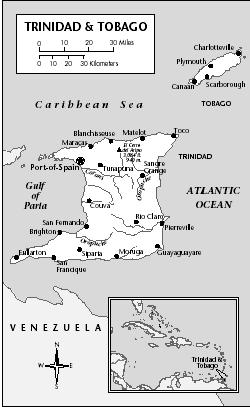Trinidad and Tobago - Environment
Among environmental problems, pollution from oil spills is the most serious. Water pollution is also caused by mining by-products,

pesticides, fertilizers, sewage, and saltwater. The nation has about 1.2 cu mi of water, with 35% used for farming and 38% used for industrial purposes. About 90% of the population have access to pure drinking water. The nation's cities produce about 0.2 million tons of solid waste per year. Soil erosion has occurred, in part, because of the clearing of land for farming. Environmental responsibility is vested in the Ministry of Energy and Natural Resources. In 1989, the Ministry of the Environment and National Service was formed to regulate the nation's treatment of its natural environment.
On the west coast of Trinidad is the Caroni Bird Sanctuary, famed for its marshland and mangroves, where flocks of scarlet ibis roost. Little Tobago is reputed to be the only place aside from New Guinea where the bird of paradise lives in the wild. Endangered species on Trinidad include the Trinidad piping guan, tundra peregrine falcon, loggerhead turtle, and red siskin.